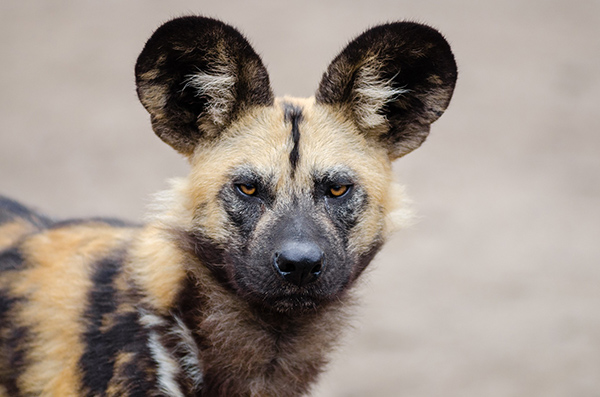
08 Nov Extinction Tourism: Seeing Wild Animals Before They’re Gone

Grizzly bears now face the threats of habitat loss and fragmentation; the cascading effects of salmon collapse and climate change; and human-caused deaths from vehicle collisions, hunting, poaching and our carelessness.
All travelers would like to think that their journeys are motivated by a proclivity for adventure, by a strong desire to learn, by a healthy dose of curiosity about the world and by a sense of wanderlust. I know that I do, and I bet you do, too.
If I were truly honest with myself, though, I’d have to admit that sometimes my travels are spurred by a fear of loss.
In 2012, for example, I returned to Churchill, Manitoba, Canada, not only to celebrate the 10-year anniversary of my first journey there but to see polar bears in the wild before they’re gone. In the winter of 2014, I went to Yellowstone National Park for the purpose of photographing our nation’s wolves before we almost completely extirpate them in the Lower 48—again. And in the summer of 2015, I went to Kodiak, Alaska, to spend time among grizzly bears before we drive them into oblivion with our fragmentation of their habitats and our mineral mining.
You could call me an “extinction tourist.”

I went to Churchill in 2012 not only for an anniversary but to see polar bears in the wild before they disappear. You could call me an “extinction tourist.”
I’m far from unique. More and more, people are traveling to see the wildlife that they think might soon vanish from the Earth. While just a few years ago travelers might have endeavored to tick off all seven continents, Africa’s Big Five game animals or a “Bucket List of Places to See Before You Die,” today there’s a certain “cred” given to those who see the animals that are just managing to hang on. And tour providers are tapping into that desire with their marketing messages, such as ad campaigns that encourage you to “See [fill in your favorite endangered animals] before they’re gone!”
But should tourism companies use threatened species as marketing tools? Given our ability to tune out ads, does that make light of the dire circumstances that these animals are now in and dilute the attention that serious conservation messages would otherwise have been able to attract?
Going, going, gone
There’s no doubt that climate change is reshaping the planet. Animals and plants are going extinct at a rate that will only accelerate as the world continues to warm. It’s now a very real possibility that both polar bears and elephants could disappear within 25 years. In fact, because of such realities, scientists are becoming more and more reluctant to reveal highly detailed or location information about rare species, hoping to deter tourists from harming the last few representatives of a failing animal group or collectors from scooping up uncommon plants and selling them on the Internet.

Within 25 years, the illegal poaching of African elephants for their ivory could cause the animals to become extinct. ©Eric Rock
For example, late last summer, a baby dolphin died on a beach in southern Spain after a group of tourists passed the animal back and forth among themselves for selfies and group photos, rather than guiding it back into deeper waters in hopes of finding its mother. A similar scenario happened in Costa Rica in 2015, when a crowd that numbered in the thousands came to watch as hundreds of thousands of vulnerable olive ridley sea turtles crawled out of the ocean to lay their eggs in the black, volcanic sand. A Facebook page advertising the event drew the crowd. Onlookers began snapping Facebook-worthy selfies with the turtles, shooting other photos by using flash photography, perching their children on the turtles’ backs and trampling nests. Scared off, most of the ancient reptiles simply turned around and went back into the sea—without laying any eggs.
What’s even more detestable and dangerous is when “faux tourists” go on wildlife tours: poachers who pose as tourists to get the locations of rare, hard-to-find animals that they can later come back to kill and then sell their body parts.
At the same time that the extinction of species is accelerating due to climate change, more people are traveling. These new tourists are willing and able to go to more far-flung destinations than ever before. The World Travel and Tourism Council, a business association of the top 100, largest tour companies, says that tourism and travel is predicted to grow 3.9 percent annually over the next 10 years. Travel and tourism is the world’s largest generator of wealth and employment—directly or indirectly responsible for 292 million jobs around the world; that’s one in 10 jobs on the planet. Last year, its global economic contribution (direct, indirect and induced) was more than $7.6 trillion.
Added to that, the International Ecotourism Society estimates that ecotourism and nature tourism are growing three times faster than the industry in general—and that can’t help but have an enormous impact on wildlife. It’s a catch-22 for ecotour companies: while dwindling animal populations are building client bases, getting growing numbers of nature travelers close to the rarities they want to see may be speeding the species’ decline.
Does an extinction tourist become an animal activist?

The Galapagos Islands restrict tourism to protect this World Heritage site’s flora and fauna. ©Michael R Perry, flickr
Some places, such as Antarctica and the Galapagos, have put regulations in place regarding numbers of tourists in order to protect their wildlife, plants and landscapes. Others would argue, however, that such measures aren’t enough. They would like to see tourism banned from some locations altogether until native, natural residents can recover.
According to Ted Martens, vice president of marketing and sustainability at Natural Habitat Adventures, his company has seen an increase in the number of travelers expressing interest in seeing animals before they are gone—even though NatHab does not use such sentiments in its advertising messages. “Wildlife around the globe is facing a myriad of challenges, from climate change to illegal poaching,” says Ted. “Many of the world’s iconic species are under threat of extinction. It is our hope that traveling to visit these amazing creatures in their natural habitats will instill a passion in travelers to help conserve and protect them, perhaps even saving them from the extinction threat that inspired travel in the first place.”
Some of those amazing creatures Ted references are African elephants, African lions, Galapagos giant tortoises, Malayan sun bears and polar bears—all listed as vulnerable; endangered African wild dogs, Galapagos sea lions and humpback whales; and North American grizzly bears, which are threatened in the U.S. Opportunities to see these animals are huge draws to tourists, and that hasn’t escaped the notice of tour providers.

The African wild dog is one of the world’s most endangered mammals. That inspires many to travel to see them in the wild—now, while they still can.
I will say that after seeing polar bears and wolves in the wild and having the chance to sit in a meadow as dozens of grizzly bears walked by within feet of me, I pay special attention to conservation calls for monies to help them or pleas to protect their habitats from our developments, roads and energy extractions.
Perhaps, then, being an extinction tourist isn’t perverse or such a bad thing, especially if it ends up turning that traveler into an animal or environmental activist.
Have you ever traveled to a place specifically to see an animal that you feared would soon be gone? Are “extinction tourists” more likely to help or to harm at-risk species?
Here’s to your adventures, in whatever corner of the world you find them,
Candy
Latest posts by Candice Gaukel Andrews (see all)
- 10 Reasons Why a Dose of Fear Is Good for You - December 13, 2017
- Extinction Tourism: Seeing Wild Animals Before They’re Gone - November 8, 2017
- The Travel Cycle’s Four Stages—Plus One - October 18, 2017




No Comments